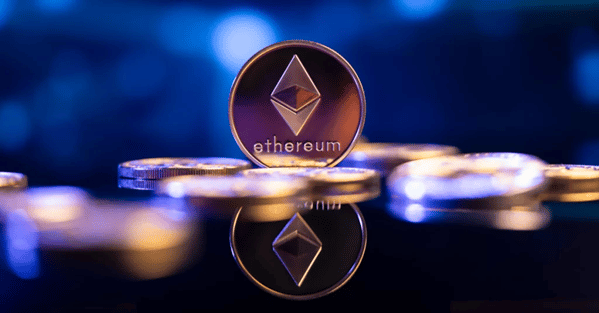- Accounts
- About
- Trading
- Platforms
- Tools
- News & education
- News & education
- News & analysis
- Education hub
- Economic calendar
News & Analysis
Is Ethereum Deflationary? And is it a good thing?
11 October 2022
What is a deflationary Cryptocurrency?
A Deflationary Cryptocurrency is one that burns, (mints) its supply. This process lessens the number of coins or tokens on the market over a specific period (generally a year), which reduces supply and increases the price.
In general terms, ensuring that there isn’t an oversupply of a currency can be an important monetary tool to reducing inflation. Evidence of quantitative easing and what can happen when there is an oversupply can be seen by the record high inflation seen around the world.
The two largest cryptocurrencies, Bitcoin and Ethereum, are both tipped to become deflationary in the future but for varying reasons
Is Bitcoin deflationary?
Bitcoin has a fixed, maximum supply of 21,000,000 BTC that will be fully mined in the year 2140. The current supply of BTC is 19,008,012.00 and 20% of this supply has been lost due to forgotten passwords and forgotten keys. It’s projected that Bitcoin may officially become deflationary once its full supply has been created, as the circulating supply will continue to reduce due to holders’ unintentional losses.
Is Ethereum deflationary?
Unlike, Bitcoin, Ethereum does not have a maximum supply. Rather, it has an annual supply cap at 18 million ETH. For Ethereum to become deflationary, 2 ETH would need to be burned per block; this is because this amount is minted for each block that is mined. As per the historical data, the ETH net issuance will dive lower creating a rally in the ETH price as the circulating supply will be less.
A common way to achieve deflation is by burning tokens. Ethereum does this by minting tokens that are staked or when NFTs are minted. A point worth noting is that cryptocurrencies with a finite supply are deflationary by default. When investors buy and hold the coin, the supply reduces.
Ethereum has temporarily turned deflationary in the last few days. An unknown project by the name of XEN has assisted in the burning of ETH.
What is XEN?
XEN is a project created by the “Fair Crypto Foundation,” backed by Jack Levin, one of the first employees at Google working on cloud infrastructure. The ethos aims to empower the individual with a token that starts with a zero supply and has no pre-mint, CEX listings, admin keys, or immutable contracts.
XEN, which launched on Oct. 8, can be claimed, minted, or staked and is based on the first principles of cryptocurrency: self-custody, transparency, trust through consensus, and permissionless value exchange without counterparty risk.
XEN can only be traded on Uniswap, where there is very little liquidity. Time will tell if the latest hot cake in crypto turns into just another swindle.
Key Takeaways
- ETH has turned deflationary over the past 24 hours.
- High gas consumption to mint tokens for the new project XEN Crypto is the primary cause of the ETH supply drop.
- ETH’s supply has dropped on several occasions since Ethereum completed “the Merge” in September.
Are you keen to venture into trading Cryptocurrency pairs, FX, stocks or commodities? If so, you can do so by opening an MetaTrader trading CFD account with GO Markets here or call our Melbourne based office on 03 8566 7680 to discuss your trading goals with our account managers to get started.
Sources: https://au.finance.yahoo.com/, https://xcoins.com/, https://coingape.com/, https://cryptopotato.com/, https://cryptoslate.com/
Disclaimer: Articles are from GO Markets analysts and contributors and are based on their independent analysis or personal experiences. Views, opinions or trading styles expressed are their own, and should not be taken as either representative of or shared by GO Markets. Advice, if any, is of a ‘general’ nature and not based on your personal objectives, financial situation or needs. Consider how appropriate the advice, if any, is to your objectives, financial situation and needs, before acting on the advice. If the advice relates to acquiring a particular financial product, you should obtain and consider the Product Disclosure Statement (PDS) and Financial Services Guide (FSG) for that product before making any decisions.
Next Article
Aussie Dollar breaks through two year price lows
The Aussie dollar has been dropping on the back of global volatility and a lower-than-expected interest rate hike. The AUD has dropped to its two-year lows, and it doesn’t look there is an end in sight. With the AUD already being a risk on currency the fears and pressures from a potential recession are weighing heavily and accelerating the drop. ...
October 11, 2022
Read More >
Previous Article
How to practically implement Long-Short strategies into your trading
Long and Short trading and investing strategies are often seen as advanced strategies only used for large hedge funds and large banks. However, retail...
October 10, 2022
Read More >

